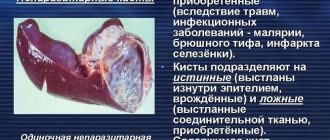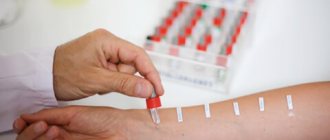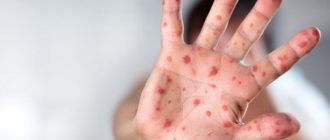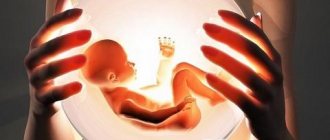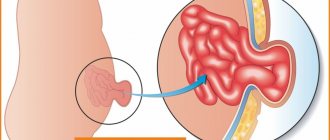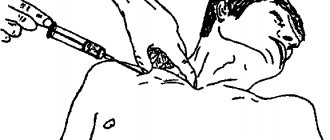February 12, 2017
Averyanova Sveta
Rickets in children is caused by a disruption in the functioning of the systems that are responsible for supplying phosphorus and calcium to the body. If you do not pay due attention to this problem, then in addition to weak immune defense and sickness of the baby, you can face more serious consequences. Why is rickets dangerous? The appearance of osteoporosis, caries, anemia. Therefore, it is important to identify this pathology in time. And in order not to waste time and engage in timely treatment, you need to know what the signs of rickets are in children, why it appears and how it is treated.
Where does vitamin D come from in humans?
About seven variations of vitamin D are known. They enter the body with food or are synthesized in the skin. The most active vitamins are D2 (ergocalciferol), found in plant foods, and D3 (cholecalciferol), found in animal foods.
In the skin, upon irradiation with ultraviolet light, provitamin D is converted into vitamin D3. After the vitamin has been synthesized or absorbed in the intestines, part of it is deposited in the adipose tissue of the muscles, and the other is transferred to the liver.
In the kidneys and liver, the inactive form of the vitamin undergoes hydroxylation processes and is converted into active metabolites. In the liver, this is facilitated by the enzyme 25-hydroxylase, and in the kidneys by 1-alpha-hydroxylase. The result is the formation of calcidiol in the liver. And in the kidneys - calcitriol.
How does vitamin D work?
- Provides calcium absorption by the intestinal wall
- Enhances reuptake of calcium and phosphorus by renal tubules
- Accelerates the absorption of mineral salts into bone tissue
- Works as an immunomodulator
- Stimulates the metabolism of tricarboxylic acids
How risk factors work
- Premature babies - a newborn who was unlucky enough to be born premature has a lot of errors in the enzymatic systems, which makes it difficult to absorb vitamin D even with normal feeding.
- A large baby requires larger amounts of vitamins than its peers.
- Formula-fed - Receives a diet in which the phosphorus-calcium ratio differs from that in breast milk and makes it difficult for the absorption of these minerals.
During the infant period, the child’s body is not mature enough to normalize all types of metabolism, even in conditions where there is no hypovitaminosis.
In addition, during this period of time, a child living in a harsh climate wraps up more, even in the warm season (since he is not hardened), and spends less time in the air without clothes and hats. Even the meager amounts of ultraviolet insolation that he could receive are ignored due to the risk of colds and ear infections.
During the same period, dysbacteriosis is common, disrupting absorption and enzymatic processes, which affects the metabolism of the vitamin. Also, due to intestinal problems, the child is on a gentle feeding regimen for a longer period of time and later receives complementary foods, which limits the natural intake of the vitamin from food (see what a nursing mother can eat).
Frequent respiratory diseases lead to an increase in the need for the vitamin, and also impair its absorption and shorten the frequency and time of walks.
Other tips
Be a support and support for your child from the first days of life. Affectionate communication, maternal and paternal care will give him confidence. He will be less capricious, willingly eat and walk in the fresh air with his loved ones.
Interesting Facts
Despite all of the above, it was noted that among the peoples of the Far North or North American Indians leading a traditional way of life, children practically did not suffer from rickets on such a scale as is observed among modern residents of large cities in northern latitudes.
The thing is that the children of these peoples were outdoors for most of the day almost from birth, fed on mother’s milk until the age of two or three years, and did not constantly suffer from respiratory infections, like the modern generation.
At the same time, in industrialized Great Britain, even at the beginning of the 20th century, children in cities not only got sick, but also died en masse from rickets, for which the disease was nicknamed “English”.
There is also a genetic predisposition to rickets (based on the characteristics of enzymatic systems) in the Negroid race.
Recent research by specialists proves that there is a hereditary nature of the disease, when in the absence of vitamin D deficiency, in some variants of the course, a gene mutation is detected. It is assumed that children with blood group 2 and predominantly boys are more susceptible to rickets; girls suffer from a milder form. Overweight children and premature babies are at risk. The main cause of rickets is considered to be vitamin D deficiency - due to a small amount of it in food, disruption of the gastrointestinal tract, and poor formation of vitamin D in the skin due to lack of ultraviolet radiation.
How is rickets divided?
There is a primary form of the disease associated with a deficiency in the supply or synthesis of vitamin D and a secondary one.
Secondary rickets is observed when:
- malabsorption
- for renal pathologies
- for diseases of the biliary tract
- for fermentopathy
- with long-term use of anticonvulsants
- with insensitivity of receptors to vitamin
According to calcium and phosphorus metabolism disorders, rickets is divided into:
- calcium deficient
- phosphorus-deficient
- without errors in calcium and phosphorus levels
According to the nature of the disease, the following are distinguished:
- acute rickets with a predominance of bone loss
- subacute, when bone growth prevails over rarefaction
- recurrent rickets is characterized by the presence of signs of an active process and previously suffered rickets
Symptoms of rickets in children under one year old
The stages of rickets in infants are divided into the period of initial manifestations, the height, and the period of residual effects.
Initial manifestations
They occur at the age of 3-4 months in infants. Less commonly, the first manifestations of rickets in infants are observed at 2 months or six months. There has been a connection between the onset of the disease and rapid weight gain or an infectious disease (including ARVI). The duration of this period is about 4 weeks.
- Most often, the onset of rickets, noted by parents, is manifested by increased sweating of the child, especially his head. When a child sleeps, his pillow may be completely wet. Similar sweating is observed during periods of child activity (eating, sucking, playing).
- The second frequently noted symptom is the gradual baldness of the back of the head in children under one year old and their increased reaction to noise. If previously the child did not react to the usual household noises, now he wakes up or flinches from any sound.
- But in addition to the symptoms that are noticeable even to a non-specialist, in the initial period of rickets there is a significant softening of the bone tissue. The edges of the large fontanel and the sternocostal joints become soft, and the formation of tubular bones slows down.
The height of the disease
This period is characterized by increased bone tissue formation. At the same time, persistent bone deformations and disturbances in the functioning of the nervous system appear. Internal organs, hematopoietic system. There are three degrees of severity of rickets. which can be distinguished precisely in this period (light, medium and severe).
- Bone deformities
They come down to curvature of the collarbones and shins (o-shaped or x-shaped deformity). Bone growths (rachitic rosaries) form on the wrists, ankles and sternoclavicular joints. A depression or excessive convexity of the sternum, a transverse groove of the chest wall (Harrison's groove) is formed. The head takes on an angular shape, the forehead becomes abnormally convex, and the hard palate and jaw arches are deformed. Teeth erupt unevenly and with a delay (see teething in infants).
- Decreased muscle tone
This affects motor delays and failure of normal motor activity. The child begins to lag behind in terms of turning over, sitting, and standing. He develops incorrect posture and hypermobility of the joints. He is more prone to domestic injuries.
- The nervous system suffers significantly
On the part of the central nervous system, there is an increase in excitability and irritability. Sleep is disturbed. Higher cortical functions suffer: the child learns worse and loses already acquired skills. The autonomic system responds to rickets with red dermographism. Violation in the regulation of internal organs.
- Decreased appetite
The most unpleasant manifestation may be refusal of breast or formula. The child refuses to eat, and no amount of lengthening the intervals between feedings helps. This affects muscle lethargy, an increase in anemic oxygen starvation and a decrease in the production of digestive enzymes.
- Iron deficiency anemia is most pronounced in the anemic variant of rickets. The child is pale, easily tired, lethargic, and drowsy.
- The immune system is weakened, and the risks of various acute diseases increase.
Signs of rickets in a child may include:
1. Dwarfism 2. Craniotabes - thinning and softening in the area of the small and large fontanelles of the flat bones of the skull. 3. Dolichocephaly (long-headed) - elongated skull 4. Pigeon (cock) chest 5. Rachitic rosary 6. Harrison's groove - expansion of the lower part of the chest and its depression. 7. Bony epiphysis - the expanded end of the tubular bone 8. Rachitic pelvis 9. Curvature of the limbs
Residual effects of rickets
These are remaining deformities of the skeleton and teeth, short stature, enzymopathies, underdevelopment of the muscular frame, and deficits in psychomotor development. And if psychosomatics can be improved, then skeletal malformations, postural disorders, and dental defects remain for life.
The role of phosphorus and calcium
The basis of bone tissue is calcium phosphate. It is formed as a result of complex physical and chemical processes. A regulates salt metabolism not only by vitamin D, but also by A, group B, C, E, thyroid and parathyroid hormones, the concentration of the minerals themselves, the rate of their elimination from the body, and the quantity and quality of transport proteins also play a role.
As a result of a breakdown at at least one of the stages, either a sufficient amount of calcium phosphate does not enter the bone or it is washed out into the blood to maintain internal homeostasis (for the functioning of more important structures). Bone tissue becomes loose and soft or, conversely, processes of perverted synthesis begin in it. The main symptoms of the disease are associated with this.
Diagnosis of rickets
Diagnostic measures for rickets today are difficult and confusing. If previously a qualitative test for calcium content in urine (Sulkovich's test) was considered reliable, it has now been rejected. Only the plasma calcium level can be considered reliable. Therefore, it is now customary to study the following blood parameters:
- serum calcium, phosphorus, magnesium, alkaline phosphatase and creatinine levels,
- level of vitamin D metabolites.
X-rays of the lower leg and forearm are also prescribed, which reveal a decrease in bone density, unclear boundaries of zones of calcification of cartilaginous tissue, deformation of the metaphyses and expansion of the growth zones.
There are 3 degrees of rickets in children
- With rickets 1 (mild), 1-2 bone manifestations are noted (from the head, chest, limbs), there is muscle hypotonia, but psychomotor development is not impaired.
- In grade 2 (moderate), bone deformities are more severe (the legs, spine, and sternum are deformed), and damage to the nervous system and internal organs is pronounced. There are deviations in the motor and mental components of the child’s development.
- At 3 (severe degree), bone deformations are multiple and persistent, the child lags behind in development, his hematopoiesis, digestion, cardiovascular and respiratory systems, and the central nervous system suffer.
What tests are needed to make a diagnosis?
- An experienced pediatrician only needs to look at the child to make a diagnosis. But to treat pathology and monitor therapy, it is necessary to accurately know the level of minerals in plasma and urine, as well as the degree of damage to the skeletal system. For this purpose, a biochemical blood test and x-ray examination are performed. Blood is taken on an empty stomach, preferably in the morning. No specific preparation is required for x-rays.
- If a moderate or severe degree is suspected, a comprehensive examination is carried out, including ultrasound, to clarify the condition of the internal organs and identify the possible cause of the disease.
How to treat rickets in infants
- General therapeutic and preventive measures for rickets in infants
Therapeutic measures begin with normalizing the child’s lifestyle and nutrition. It is important that the child walks for at least 4 hours a day and is in a ventilated and normally lit room. In spring and summer, it is important that the child receives enough sunlight. If possible, the child should be taken out for a walk as undressed as possible.
The best nutrition for a child under one year of age is breast milk with an optimal calcium-phosphorus balance. If it is impossible to establish breastfeeding, they resort to adapted formulas. It is important to introduce complementary foods in a timely manner. For a child suffering from rickets or at risk of development, one-component vegetable puree (zucchini, broccoli) is preferable as the first complementary food. It is important to monitor the balance of fats, since vitamin D is fat-soluble, and to introduce vegetable oil and butter into the diet in a timely manner (see how to introduce complementary foods to a child under one year old).
Daily bathing in salt or pine baths is important. This calms the nervous system and strengthens the immune system.
- Medicines are used to treat and prevent rickets
Aquadetrim - Today, preference is given to aqueous solutions of vitamin D3 (colecalciferol), for example, Aquadetrim. The drug is well absorbed and does not accumulate, being excreted by the kidneys. This allows it to be used without the risk of overdose for prevention and treatment. Preventive doses are given from the age of 4 weeks and range from 2 to 4 drops (depending on the region of residence, weight and condition of the child). Therapeutic dosages are selected by the doctor and increased gradually. On average, 6 to 10 drops for 4-6 weeks, followed by preventive dosages. Prevention of rickets in infants is carried out throughout the autumn-winter period. For children in the northern regions, prevention is also carried out in the summer when there is insufficient insolation.
Devisol, Vigantol, Videin - Oil solutions of vitamin D3 (Vigantol, Videin). Of the imported drugs, Finnish Devisol is used. It does not cause allergies, therefore it is preferable for children with diathesis to Aquadetrim. But at the same time, the oil solution is not suitable for children with dysbiosis and absorption problems (see intestinal dysbiosis - symptoms, how to treat dysbiosis, probiotics analogues of Linex). It is also quite problematic to titrate therapeutic dosages (the prophylactic dose of devisol is 5 drops).
An oil solution of vitamin D2 (Ergocalciferol) is used for prevention, but taking oil solutions has a number of disadvantages, so it is prescribed less frequently.
Treatment
Individual therapy for rickets is prescribed depending on the degree of clinical manifestations and accompanying symptoms. Treatment is carried out in the following areas:
Drug therapy. Taking vitamin D, calcium supplements, phosphorus and multivitamin complexes. In some cases, citrate mixtures are used to improve calcium absorption in the intestines. To normalize the functioning of the parathyroid glands, potassium and magnesium supplements are included. To stimulate metabolic processes and eliminate muscle hypotension - potassium orate. The dosage of medications is determined only by the attending physician.
Diet: infants are prescribed early complementary feeding, nursing mothers are given nutritious nutrition, and vitamin and mineral supplements.
Daily routine: includes mandatory walks outside for 2-3 hours, hardening procedures. Exercise therapy and massage will help restore muscle tone, prevent poor posture and the development of flat feet.
Important!
Treatment of rickets must be monitored by regular testing, so-called biochemical markers. The anti-crystal-forming ability of urine is periodically examined. It is necessary to exclude the development of hypervitaminosis (excess vitamin D).
A course of UFO (ultraviolet radiation), balneotherapy, and mud therapy may be prescribed. Spa treatment is recommended.
FAQ
How to determine rickets in a baby?
A baby with rickets sleeps poorly, flinches at loud noises, wakes up from previously familiar noises, and sweats profusely. The back of his head is wiped and his appetite spoils.
How great are the risks of vitamin D overdose?
For a child under one year of age, when using an aqueous solution of vitamin D3 in the amount of 2 drops, there is no risk of overdose.
Does sunlight or quartz solve the problem of rickets?
Only in cases where the child is breastfed, sunbathes from birth, walks daily and receives ultraviolet irradiation daily on at least half of the skin.
If the adapted milk formula contains vitamin D, is it possible not to give the drugs?
Infant formula does not cover even the preventative need for the vitamin. Mothers of premature babies, those born weighing 4 kg or more, as well as frequently ill children should be especially wary. For them, it is possible to start prophylaxis with drugs from 2 weeks of age.
Is it true that breastfed children are more susceptible to rickets?
Nothing like this. Breast milk has an optimal ratio of calcium and phosphorus; moreover, during breastfeeding, their content and ratio ensure their better absorption.
Is it true that feeding goat milk protects against rickets?
A very dangerous misconception. Although this milk contains fats that promote the absorption of vitamin D, they are three times higher than normal, which can lead to damage to the pancreas. If milk is diluted three times so that its fat content is close to breast milk, then its nutritional value in terms of protein is lost. In addition, children under one year old should not be given either cow's or goat's milk.
Let's sum it up
Every mother is afraid of the word “rickets,” because it entails many problems for the child, developmental delays, and is considered almost a dirty word. In fact, most parents’ fears are unfounded, because preventing rickets is easy. It is enough to pay attention to the child’s daily routine and feed the baby healthy food.
Don't neglect breastfeeding, because nature knows best what the baby needs. Walking with your child every day in any weather should become a habit and a daily ritual.
Using simple tips and recommendations, you will keep your baby healthy, help your baby develop and actively explore the world.
